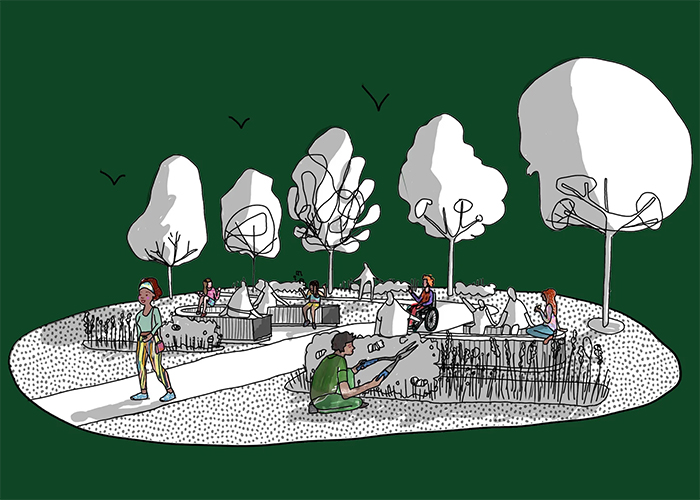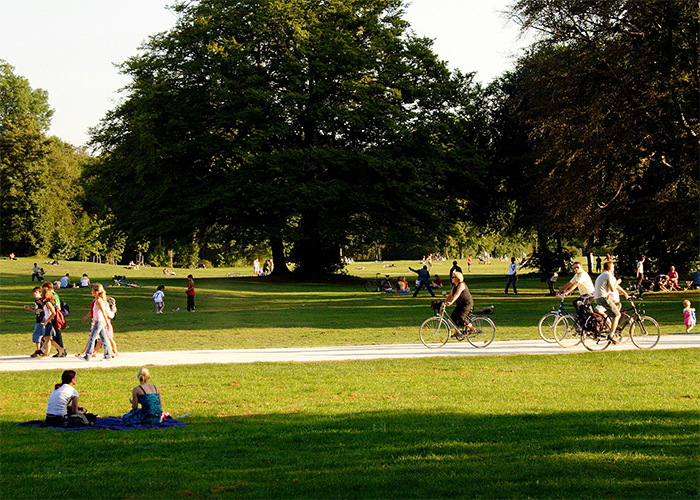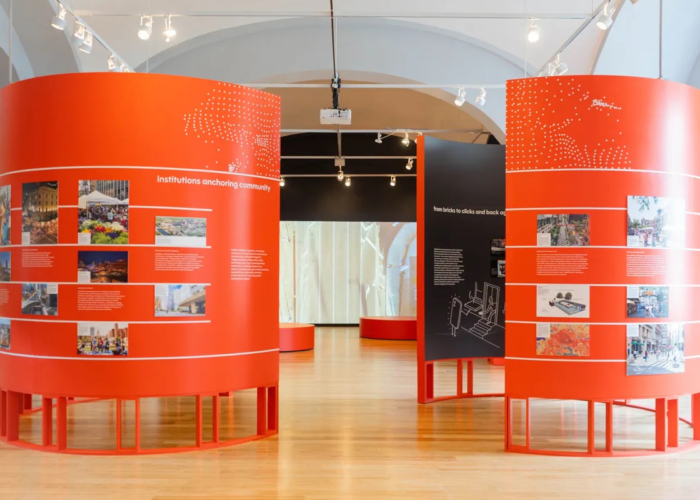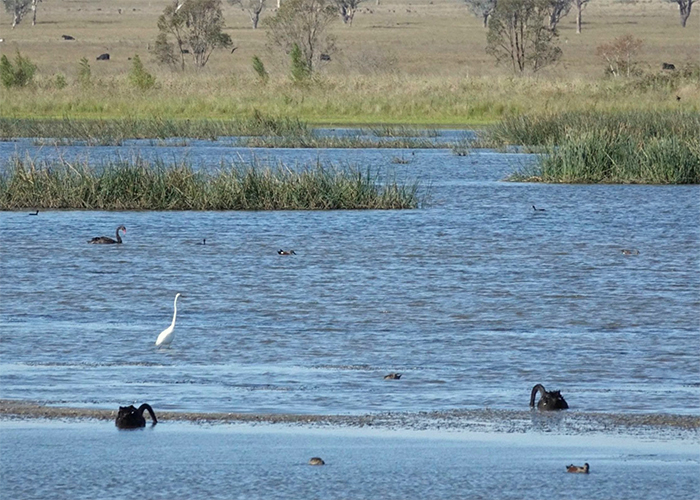For almost three decades the cancer support charity Maggie’s in the UK has provided patients an alternative to windowless, sterile oncology facilities. Their 27 major hospital sites offer respite, solace and practical support, ranging from nutritional specialists to breathing classes in a calming sanctuary. Gardener, designer and writer, Maggie Keswick Jencks started the charity in 1995, feeling a need for support beyond the clinical hospital wards. Unfortunately she didn’t live to see the first doors open the following year. Today, each landscaped garden highlights the changing seasons, from a shrub shedding its leaves in autumn to flowers blooming in spring. Observing seasonality can help patients adjust to the changes they’re experiencing over time. In each location the proximity of the garden to the Oncology department is crucial to its success. …
streetchat

Trend Watch
The second edition of Safer Parks: Improving Access for Women and Girls brings renewed attention to how public green spaces must evolve to address longstanding safety and access inequities. The report builds on research from the University of Leeds and other partners and is now endorsed by the UK’s Police Crime Prevention Initiatives. The guidance is structured around three sections: ‘Eyes on the Park’ (ensuring sufficient presence and visibility of people to increase confidence), ‘Awareness’ (design and management interventions to boost perceived and actual safety), and ‘Inclusion’ (ensuring voices and experiences of women and girls shape the space). Ten guiding principles across these sections are illustrated with case studies showing how practical design, maintenance and usage strategies – such as sight lines, lighting, programming, local outreach and responsive maintenance – …
A new study published in Nature Cities finds that spending time in urban green spaces delivers powerful mental health benefits. Researchers analysed 78 experimental field studies and 449 peer-reviewed papers to quantify how exposure to different types of urban nature impacts mental health outcomes. Key findings: Time spent in green urban environments – notably forests and parks – is linked with meaningful reductions in anxiety, stress and low mood, and boosts to positive wellbeing and vitality. Importantly even short exposures (as little as 15 minutes) yield measurable benefits, while longer engagements (45+ minutes) result in greater gains. The effects are especially pronounced among young adults, although positive effects were seen across all age groups. The researchers say the findings highlight the importance of safeguarding and expanding access to urban nature as …
Now showing at Washington D.C.’s National Building Museum, ‘Coming Together: Reimagining America’s Downtowns’ explores how US cities have renewed and reactivated their centres since Covid-19. Curated by Georgetown University urban planning professor Uwe Brandes and designed by Reddymade, the exhibition showcases creative approaches to public space, walkability and mixed-use revitalisation. Multimedia installations, maps and case studies from more than 60 US cities show adaptations of the past five years – with empty offices turned into housing, reallocating street lanes for parklets and ‘streateries,’ and remaking sidewalks as gathering spaces. Thematic galleries – Social Distancing, Cities Take Charge and City Action Hall – reflect the shock of the pandemic and creative responses that followed. As visitors traverse the exhibition, they are invited to reflect: how hollowed-out downtowns of 2020 gave way …
Olivia Poston explores eco-brutalism, a contemporary reimagining of Brutalism that combines the post-war monumental rawness with integrated greening, for ArchDaily. Brutalism, which emerged in post-war Europe and spread globally, is known for exposed concrete, steel and ‘functional honesty’. These buildings – often civic, educational and housing projects – were built to endure rather than charm. Eco-brutalism retains this scale and purpose while softening it with greenery, natural light and passive performance systems. Vegetation cascades from balconies, rooftop gardens reclaim flat surfaces and interiors are informed by light and air. This hybrid movement reflects a contemporary demand for architecture to reduce emissions, support biodiversity and remain culturally meaningful. Yet, as Poston notes, eco-brutalism carries a paradox: concrete is among the most carbon-intensive materials, and adding plants does not automatically make a …
The Landscape Foundation of Australia (LFA) has provided expertise to help Uralla Shire Council and sustainability group ZNET Uralla to achieve their vision to regenerate a once-overgrazed former racecourse into a significant natural landscape. The Uralla Racecourse Lagoon was once ringed by the sounds of horses’ hooves and cheers. Today, with the 41-hectare reserve now managed by Uralla Shire Council, restoration efforts aim to restore the local ecology, encourage the return of migratory birds and boost biodiversity. In 2022 LFA director and landscape architect Noel Corkery worked with council officers to prepare a grant application for the site, securing $150,000 from the NSW Environment Trust in 2023. Corkery prepared revegetation and planting specifications, ensuring a mix of native species that offer shade, light and views as they mature. Stage 1 …








